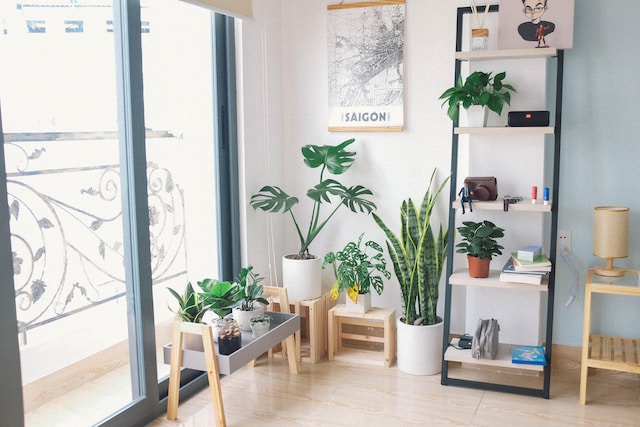How to live as a minimalist with family: tips for family minimalism

Is it possible to live minimalist when you have a family? Young children? A partner who’s finding the concept of minimalism tough to grasp? With Panda7’s hot tips, it is!
What is minimalism? Minimalism is the act of intentionally living with only the basic necessities – i.e., items and possessions that support your ideal lifestyle. Excess possessions in minimalism only serve to distract, so we remove them to focus on what matters most. Minimalism can exist on any scale, but true minimalists are defined by intentionality. Remove distractions, promote what we value.
But how is this done with a larger family? With children, we have need for more belongings, so minimalism can seem like a faraway pipe dream. Panda7 is here to clarify: family minimalism is possible, it just needs some work! Here are some family minimalism tips.
Demonstrate the concept and “why” of minimalism to your children
In order for your family to hop on board, you’ll need to show them why minimalism is important. Young children especially will have a difficult time of grasping the concept, but they can learn. If you have taken the leap to adapting a more minimalist life while your kids are young, it’s a guaranteed that they’ll be asking you about your change of habits. Let them be involved, answer their questions and, if they show an interest in your newfound minimalist habits, let them embrace it!
Minimalism sounds simple from the onset, but it’s actually a pretty big concept. Introduce it slowly. For very young ones, try picture books about decluttering and cleaning. Try to err on the side of fun and excitement versus making minimalism yet another chore.
Lead your family by example
Kids won’t practice what they don’t know, so it’s time that you took the lead and embrace your inner minimalist parent. Start with your own belongings. If something is proving more of a distraction than it serves your purpose, it’s gone! You can begin your own minimalist journey by creating a list of things that aren’t important to you, aka the list of “non-sentimental” items.
By beginning simply, you can show your children (and even your partner!) that minimalism isn’t tough to get into. It can also help prepare you to teach your children how to navigate the emotions that can come with saying goodbye to your possessions – especially since you’ve gone through them yourself.
Remember: minimalism is a shared endeavour, not one that should be tackled alone
It can be difficult to declutter the entire house on your lonesome, which is why you should enlist your partner as well as your kids! They all live in this space the same way that you do, so they should be a part of the journey. They should certainly be going through all their own belongings, but there’s a lot of shared possessions. A partner, especially one who is having a hard time with the concept of minimalism, may need some encouragement to get rid of items that have more sentimental value.
Each family member should take the lead on their own possessions, whereas shared goods and items should be divided up between bodies.
It’s highly recommended that children begin assessing the value of their favourite items before the less valuable possessions. This gives them the chance to compare their emotions towards their most valued belongings to the ones that maybe don’t give them as much spark. This connection allows kids to understand much easier why we declutter. Decluttering, to your family members, should not be viewed as a chore or a negative experience. It’s not a punishment, either. Decluttering should be about creating a space that encourages productivity, happiness, and clarity.
Cut your clutter-causing habits at the root
It can be more difficult to deal with getting rid of your non-valuable possessions and constantly having to de-clutter if your shopping habits don’t match your minimalist ideals. Attempt to practice mindful shopping. This can help to reduce your “retail therapy” habits and overall save you time, money, and energy. Why waste your time constantly decluttering when you can simply avoid purchasing un-wanted items to begin with?
Ask yourself: do you really need the item you’re considering purchasing? Make a list before you go shopping and ensure that you stick to it! Stores are often designed in a way that banks on our reduced impulse control by the time we’re strolling nearer to the registers. Stay strong and stick to what you have planned! If you see something you really like, try to wait 24 hours before deciding to purchase. If it’s a much larger, big-ticket buy, wait up to 30 days. This can help you differentiate between an impulse buy and a true desire. Determine where this thing will fit into your home. If it seems unnatural, or it doesn’t seem like the right fit, it’s not for you!
Make a home inventory list
One of the most beneficial aspects of living as a minimalist, especially a minimalist living with a family, is that it’s easy to make a home inventory list and compile documents, photos, receipts, and warranties of everything that you own. Why is it important to do this?
Well, if anything ever happened to your home, apartment, or condo, having a home inventory list can expedite the time it takes for you to receive your settlement after filing a claim. Say a fire broke out and damaged your home, destroying a good portion of your kitchen and living room. You can provide evidence of your losses to your insurer by providing your documented home inventory list (which, ideally, will be backed with photographic evidence and proof of purchase) which helps to ensure that you will receive these items back, have them restored, or receive an item of similar quality as a replacement to compensate for your loss.
Discuss the benefits of a home inventory list with Panda7’s friendly property insurance brokers today.

